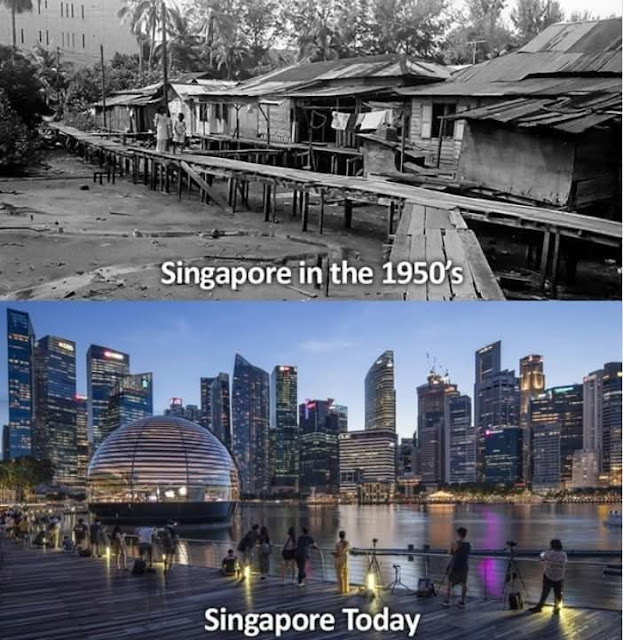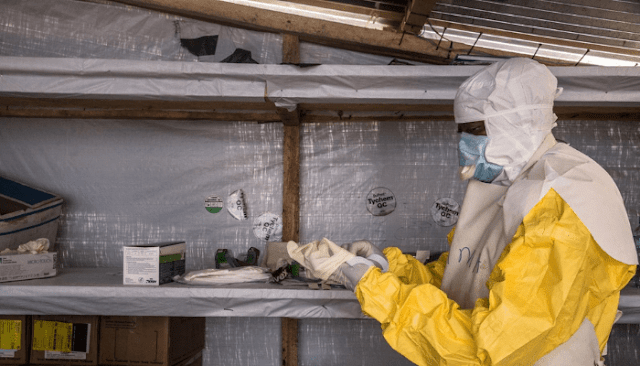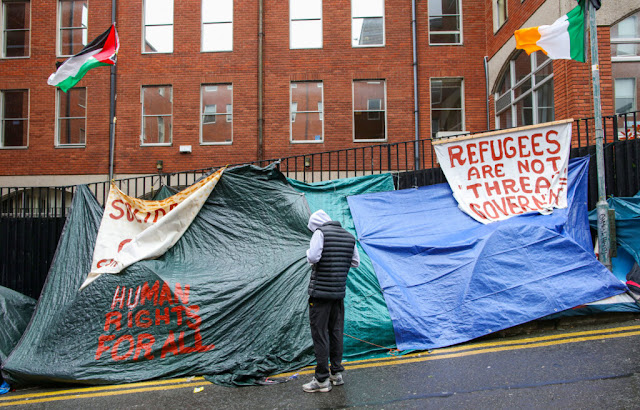On August 9, 1965, Singapore faced a moment unprecedented in modern geopolitical history: it gained independence not through struggle, negotiation, or referendum, but through outright rejection by Malaysia. Expelled from the Malaysian federation, the tiny island nation, with a population of just two million and no natural resources, was thrust into a precarious existence. Few gave Singapore much chance of survival. Yet, under the visionary leadership of its founding father, Lee Kuan Yew, the city-state defied the odds, transforming from a struggling, resource-poor nation into a global economic powerhouse within a few decades. This remarkable journey, chronicled in Lee Kuan Yew’s memoir From Third World to First: The Singapore Story, 1965–2000, serves as a testament to the power of pragmatic governance, disciplined leadership, and collective resilience. This article explores Singapore’s transformation, the strategies that drove it, the leadership of Lee Kuan Yew, and the lessons Nigeria can draw from this extraordinary case study.
The Historical Context: Singapore’s Precarious Beginnings
To understand the magnitude of Singapore’s transformation, it’s essential to revisit the circumstances of its birth. In 1965, Singapore was a small island of 581 square kilometers, with a diverse population comprising 75% Chinese, 13% Malay, 7% Indian, and others. The city-state lacked natural resources, had no significant agricultural base, and was surrounded by larger, potentially hostile neighbors. Its economy was heavily reliant on entrepôt trade, a legacy of its days as a British colonial trading post. High unemployment, racial tensions, and the lingering effects of World War II and Japanese occupation further compounded its challenges. When Malaysia expelled Singapore due to irreconcilable political and ethnic differences, the island faced an existential crisis.
Lee Kuan Yew, then a 41-year-old lawyer and leader of the People’s Action Party (PAP), became Singapore’s first Prime Minister. In a now-iconic televised address, Lee broke down in tears, expressing the anguish of separation and the uncertainty of Singapore’s future. “For me, it is a moment of anguish,” he said, reflecting the gravity of the situation. Yet, this moment of vulnerability marked the beginning of a relentless pursuit of survival and excellence. Lee and his team recognized that Singapore could not afford to be ordinary if it was to survive. As he later wrote in his memoir, “I concluded an island city-state in Southeast Asia could not be ordinary if it was to survive”.
For Nigerians, this resonates deeply, as Nigeria itself gained independence in 1960, just five years earlier, under very different circumstances. While Nigeria emerged as a resource-rich nation with vast potential, it faced its own challenges, including ethnic diversity, colonial legacies, and political instability. The contrast between Singapore’s trajectory and Nigeria’s struggles forms the crux of the discussion, prompting a re-examination of what developing nations can learn from Singapore’s model.
Lee Kuan Yew’s Vision: Pragmatism Over Ideology
At the heart of Singapore’s transformation was Lee Kuan Yew’s pragmatic approach to governance, which prioritized practical solutions over ideological dogma. Unlike many post-colonial leaders who leaned heavily on populist rhetoric or socialist ideals, Lee adopted a results-driven philosophy that emphasized economic growth, social stability, and institutional integrity. His memoir, From Third World to First, provides a detailed account of how he and his team identified the key challenges of nation-building and implemented policies to address them.
Economic Transformation: Singapore’s economic strategy was built on attracting foreign investment and developing export-oriented industries. Recognizing the limitations of a small domestic market, Lee’s government created a business-friendly environment with low taxes, efficient regulations, and world-class infrastructure. Industrial estates and free trade zones were established to lure multinational corporations, while investments in education and human capital ensured a skilled workforce. As Lee noted, “We decided to concentrate on getting factories started. Despite our small domestic market of two million, we protected locally assembled cars, refrigerators, air-conditioners, radios, television sets and tape-recorders, in the hope that they would later be partly manufactured locally”. This strategy paid off, as Singapore became a hub for manufacturing, finance, and technology, achieving one of the highest per capita GDPs in the world within decades.
Anti-Corruption Measures: Corruption, a pervasive issue in many post-colonial states, was a top priority for Lee’s government. The Corrupt Practices Investigation Bureau (CPIB) was strengthened, with sweeping powers to investigate and prosecute corrupt officials, regardless of their status. Lee’s commitment to meritocracy and transparency ensured that public institutions operated with integrity, fostering trust among citizens and investors. “If we were a soft society then we would already have perished,” Lee wrote, emphasizing the importance of discipline and accountability.
Urban Planning and Infrastructure: Singapore’s transformation into a modern metropolis required meticulous urban planning. Lee’s government invested heavily in public housing, with the Housing and Development Board (HDB) providing affordable homes for over 80% of the population. Swamps were reclaimed, roads were built, and the city was greened with carefully chosen shrubs, as Lee himself noted: “Nothing in Singapore escaped his watchful eye: whether choosing shrubs for the greening of the country, restoring the romance of the historic Raffles Hotel, or openly, unabashedly persuading young men to marry women as well educated as themselves”. This holistic approach to development created a clean, efficient, and livable city that became a model for urban planners worldwide.
Education and Human Capital: Recognizing that Singapore’s greatest asset was its people, Lee prioritized education as a cornerstone of development. The government invested in schools, technical institutes, and vocational training, ensuring that citizens were equipped for the demands of a modern economy. Policies promoting bilingualism (English and a mother tongue) facilitated global integration while preserving cultural identity. This focus on human capital development was critical to Singapore’s ability to attract high-tech industries and maintain a competitive edge.
Social Cohesion: Singapore’s multi-ethnic population posed a significant challenge, as racial tensions had sparked riots in the 1960s. Lee’s government implemented policies to promote integration, such as mixed-race housing estates and national service, which fostered a shared sense of identity. While criticized by some for its authoritarian tendencies, this approach ensured social stability, allowing Singapore to focus on economic growth without the distractions of communal strife.
Lee’s pragmatic leadership was not without controversy. His memoir candidly addresses his “trenchant approach to political opponents” and his “often unorthodox views on human rights, democracy, and inherited intelligence”. Critics argue that Singapore’s success came at the cost of individual freedoms, with strict laws on dissent, press freedom, and public assembly. Lee, however, remained unapologetic, arguing that a “soft society” would not have survived the challenges Singapore faced. “If this is a nanny state, I am proud to have fostered one,” he declared, emphasizing the trade-offs necessary for progress.
Singapore’s Economic Miracle: Key Milestones
Singapore’s transformation from a Third World nation to a First World powerhouse is a story of remarkable milestones, as detailed in Lee’s memoir and various analyses. By the 1980s, Singapore had become a global hub for trade, finance, and technology, with a GDP per capita that rivaled developed nations. The city-state’s port became one of the busiest in the world, its airport was consistently ranked among the best, and its national airline, Singapore Airlines, set the standard for excellence. Today, Singapore boasts the world’s fourth-highest per capita real income, a testament to its economic success.
Key milestones in Singapore’s journey include:
1960s–1970s: The establishment of industrial estates and the attraction of multinational corporations like Texas Instruments and Hewlett-Packard laid the foundation for economic growth. The government’s focus on export-led industrialization helped Singapore weather global economic shocks, such as the 1973 oil crisis.
1980s: Singapore transitioned from labor-intensive industries to high-tech sectors, such as electronics and pharmaceuticals. The creation of the Monetary Authority of Singapore (MAS) solidified its status as a financial center, attracting banks and investment firms.
1990s: Investments in infrastructure, such as the development of Changi Airport and the Mass Rapid Transit (MRT) system, enhanced Singapore’s connectivity and livability. The city-state’s clean, efficient environment became a selling point for foreign investors.
2000s and Beyond: Singapore continued to innovate, embracing technology and sustainability. The development of Marina Bay Sands and the greening of the city reinforced its image as a modern metropolis. By 2000, Singapore was a First World nation, with a per capita GDP of over $20,000, compared to $2,200 in the early 1960s.
These milestones, driven by Lee’s vision and policies, transformed Singapore into what Henry Kissinger described as a “First World oasis in a Third World region”. This post underscores this achievement, noting that Singapore’s success was not a product of chance but of deliberate, disciplined leadership.
Lee Kuan Yew: The Architect of Modern Singapore
Lee Kuan Yew’s role in Singapore’s transformation cannot be overstated. Described by Henry Kissinger as an “extraordinary personality” capable of overturning “ordinary calculations,” Lee was a brilliant strategist who combined a lawyer’s analytical mind with a statesman’s vision. His memoir, reviewed by Foreign Affairs, highlights his ability to identify key problems, analyze solutions, and implement them with “uncompromising determination”. Lee’s leadership was characterized by several key traits:
Visionary Pragmatism: Lee’s focus on practical solutions over ideology allowed Singapore to adapt to changing global circumstances. He prioritized economic growth and job creation, even when it meant making unpopular decisions, such as limiting welfare programs in favor of self-reliance.
Global Perspective: Lee’s interactions with world leaders, including six U.S. presidents, gave him a deep understanding of global politics and economics. His memoir recounts his role as a confidant and counselor, offering insights that shaped Singapore’s foreign policy and economic strategy.
Candor and Discipline: Lee’s forthright evaluations of colleagues and foreign leaders, as noted by reviewer Lucian W. Pye, provided a rare degree of candor in political memoirs. His discipline in governance ensured that policies were executed with precision, earning him respect and criticism in equal measure.
Commitment to Excellence: Lee’s attention to detail, from urban planning to education, reflected his belief that Singapore had to “prevail by excelling”. His vision transformed Singapore into a model of efficiency and innovation, setting a standard for developing nations.
Lee’s leadership was not without flaws. His authoritarian style, including restrictions on free speech and opposition activities, drew criticism from human rights advocates. Yet, Lee argued that these measures were necessary to maintain stability and focus on development. His memoir acknowledges the trade-offs, stating, “I always aimed to be correct, not politically correct”. This duality—visionary yet controversial—makes Lee a complex figure, admired for his achievements but scrutinized for his methods.
Lessons for Nigeria: Applying the Singapore Model
This post explicitly draws parallels between Singapore’s journey and Nigeria’s challenges, urging Nigerian leaders to study Lee’s strategies. Nigeria, with its vast population, natural resources, and cultural diversity, faces a starkly different context from Singapore’s, but the principles of pragmatic governance, anti-corruption measures, and human capital development are universally applicable. Below, we explore key lessons Nigeria can draw from Singapore’s transformation, while addressing the cultural, political, and economic barriers to implementation.
Pragmatic Leadership and Policy Consistency
Singapore’s success was rooted in Lee’s ability to prioritize long-term goals over short-term populism. Nigeria, by contrast, has often been plagued by policy inconsistency, with successive administrations abandoning or reversing the initiatives of their predecessors. For example, Nigeria’s Vision 2020, launched in 2009 to position the country among the top 20 economies by 2020, was largely abandoned due to political changes and lack of follow-through. To emulate Singapore, Nigerian leaders must adopt a long-term vision, supported by consistent policies and bipartisan commitment. This requires building institutions that outlast individual administrations, ensuring continuity in development efforts.
Anti-Corruption and Institutional Integrity
Corruption remains one of Nigeria’s most significant obstacles to development. The country ranks poorly on Transparency International’s Corruption Perceptions Index, with public funds often misappropriated for personal gain. Singapore’s zero-tolerance approach to corruption, enforced through the CPIB, offers a model for Nigeria. Strengthening agencies like the EFCC and Independent Corrupt Practices Commission (ICPC) with greater autonomy and resources could help curb graft. However, Nigeria’s entrenched patronage networks and political interference pose significant challenges. A cultural shift, driven by leadership commitment and public accountability, is essential to replicate Singapore’s success.
Investment in Human Capital
Singapore’s focus on education and skills development was critical to its economic growth. Nigeria, with a young and growing population, has immense human potential but struggles with an underfunded education system and high youth unemployment. According to UNESCO, Nigeria has one of the highest numbers of out-of-school children globally, with over 10 million children lacking access to basic education. Investing in universal education, vocational training, and STEM (science, technology, engineering, and mathematics) programs could unlock Nigeria’s demographic dividend. However, this requires addressing systemic issues like teacher shortages, inadequate infrastructure, and regional disparities.
Economic Diversification and Foreign Investment
Singapore’s export-led industrialization and business-friendly policies attracted foreign investment, creating jobs and driving growth. Nigeria, heavily reliant on oil revenue, has struggled to diversify its economy despite initiatives like the Economic Recovery and Growth Plan (ERGP). Emulating Singapore would involve creating industrial hubs, improving ease of doing business, and investing in infrastructure to attract investors. Nigeria’s challenges, including insecurity and bureaucratic inefficiencies, must be addressed to create a conducive environment. The recent Dangote Refinery project, for instance, shows promise but highlights the need for sustained government support to scale such initiatives.
Social Cohesion and National Unity
Singapore’s policies to promote ethnic integration helped mitigate racial tensions, fostering a unified national identity. Nigeria’s diversity, with over 250 ethnic groups and a history of communal conflicts, presents a more complex challenge. Policies promoting national unity, such as equitable resource distribution, inclusive governance, and inter-ethnic dialogue, could help bridge divides. However, Nigeria’s federal structure and regional rivalries complicate efforts to replicate Singapore’s centralized approach. A balanced federalism that respects regional autonomy while fostering national cohesion is critical.
Urban Planning and Infrastructure Development
Singapore’s transformation into a modern metropolis was driven by strategic urban planning and infrastructure investment. Nigeria’s cities, such as Lagos and Abuja, face challenges like overcrowding, poor infrastructure, and inadequate housing. Adopting Singapore’s model of public housing and efficient transportation systems could improve livability and economic productivity. However, Nigeria’s scale—its population is over 200 million compared to Singapore’s 5.7 million—requires tailored solutions. Public-private partnerships and innovative financing mechanisms could help bridge the infrastructure gap.
Cultural and Political Barriers to Implementation
While Singapore’s model offers valuable lessons, applying it to Nigeria requires navigating significant cultural and political differences. Singapore’s small size and centralized governance allowed for rapid decision-making and policy implementation, whereas Nigeria’s federal system and diverse population create complexities. Below are key barriers and potential strategies to overcome them:
Cultural Diversity and Federalism
Nigeria’s ethnic and religious diversity, while a strength, has often fueled conflict and mistrust. Unlike Singapore, where a strong central government could enforce integration policies, Nigeria’s federal structure requires consensus among states and regions. Strategies like devolving power to states while maintaining national standards could balance local autonomy with unity. Community engagement and dialogue, as seen in Singapore’s mixed-race housing estates, could also foster social cohesion.
Political Will and Leadership
Lee Kuan Yew’s long tenure as Prime Minister (1959–1990) provided continuity, whereas Nigeria’s frequent leadership changes disrupt long-term planning. Building a cadre of technocratic leaders, insulated from political pressures, could help sustain development efforts. Nigeria’s political class must also prioritize national interest over personal gain, a challenge given the country’s history of patronage politics.
Scale and Resource Constraints
Singapore’s small population and geographic size made resource allocation more manageable. Nigeria’s vast population and territory require significant investment and coordination. Leveraging technology, such as digital governance platforms, could enhance efficiency in resource management. International partnerships and diaspora remittances could also supplement funding for development projects.
Authoritarianism vs. Democracy
Singapore’s success came at the cost of democratic freedoms, with Lee’s government often criticized for its authoritarian tendencies. Nigeria, as a democracy, must balance discipline with inclusivity. Strengthening democratic institutions, such as an independent judiciary and free press, can ensure accountability while pursuing development goals. Public participation in policy-making can also enhance legitimacy and buy-in.
Economic Structure
Singapore’s lack of natural resources forced it to focus on human capital and trade, whereas Nigeria’s oil wealth has created a rentier economy. Diversifying Nigeria’s economy requires reducing dependence on oil through policies that incentivize agriculture, manufacturing, and technology. Singapore’s use of free trade zones could inspire Nigeria to develop special economic zones, such as the Lekki Free Zone, to attract investment.
Nigeria’s Challenges: A Comparative Perspective
Nigeria’s trajectory since independence in 1960 offers a stark contrast to Singapore’s. Despite its vast oil reserves, agricultural potential, and human resources, Nigeria has struggled with corruption, political instability, and infrastructure deficits. This post implicitly critiques Nigeria’s leadership, suggesting that the country’s failure to emulate Singapore’s success is due to a lack of visionary governance. Below are key challenges Nigeria faces and how Singapore’s model could inform solutions:
Corruption and Governance: Nigeria’s systemic corruption has hindered development, with Transparency International ranking it 150 out of 180 countries in 2024. Singapore’s CPIB offers a model for an independent anti-corruption agency with prosecutorial powers. Nigeria could strengthen the EFCC and ICPC by granting them greater autonomy and protecting them from political interference.
Economic Diversification: Nigeria’s oil-dependent economy contrasts with Singapore’s diversified, export-led model. Initiatives like the Nigerian Industrial Revolution Plan (NIRP) and the ERGP aim to diversify, but implementation has been inconsistent. Singapore’s focus on industrial estates and foreign investment could guide Nigeria’s efforts to develop sectors like agriculture and technology.
Education and Skills Gap: Nigeria’s education system is underfunded, with only 7% of the national budget allocated to education in 2025, compared to UNESCO’s recommended 15–20%. Singapore’s investment in education transformed its workforce, and Nigeria could adopt similar policies, such as vocational training and STEM programs, to address youth unemployment, which stands at over 40%.
Insecurity: Unlike Singapore, which faced minimal internal security threats, Nigeria grapples with banditry, terrorism, and separatist movements. Singapore’s national service model, which fostered discipline and unity, could inspire Nigeria to reform its National Youth Service Corps (NYSC) to promote national integration and skills development.
Infrastructure Deficit: Nigeria’s infrastructure challenges, including unreliable power and poor roads, hinder economic growth. Singapore’s investment in infrastructure, such as Changi Airport and the MRT, offers a blueprint for Nigeria to prioritize projects like the Lagos-Ibadan Expressway and the national grid.
Global Relevance: Singapore as a Model for Developing Nations
Singapore’s transformation has inspired developing nations worldwide, from Rwanda to the United Arab Emirates, to adopt elements of its model. Rwanda, for instance, has emulated Singapore’s anti-corruption measures and business-friendly policies under President Paul Kagame, achieving significant economic growth. The United Arab Emirates, particularly Dubai, has drawn on Singapore’s urban planning and trade strategies to become a global hub. These examples demonstrate that Singapore’s principles are adaptable, even in diverse contexts.
For Nigeria, the Singapore model offers a roadmap but not a panacea. The country’s scale, diversity, and democratic framework require tailored solutions. Nigeria could adopt a hybrid approach, combining Singapore’s pragmatism with democratic inclusivity. For example, creating regional economic hubs, similar to Singapore’s industrial estates, could address local needs while fostering national growth. Strengthening institutions like the Nigerian Investment Promotion Commission (NIPC) could attract foreign investment, while education reforms could unlock human potential.
Criticisms and Limitations of the Singapore Model
While Singapore’s success is undeniable, its model is not without limitations. Critics argue that Lee’s authoritarian approach suppressed dissent and limited political pluralism, creating a tightly controlled society. Nigeria, with its vibrant democratic culture, may resist such measures. Additionally, Singapore’s small size and homogeneity allowed for rapid implementation, whereas Nigeria’s complexity demands a more decentralized approach. The trade-offs between discipline and freedom must be carefully weighed, as excessive control could alienate Nigeria’s diverse population.
Furthermore, Singapore’s model relied on a unique historical moment and a leader of exceptional caliber. Replicating Lee’s vision requires leaders with similar commitment and competence, a challenge in Nigeria’s often fractious political landscape. This post acknowledges this, implicitly calling for Nigerian leaders to rise to the occasion.
The Role of Leadership: Lee Kuan Yew vs. Nigerian Leaders
Lee Kuan Yew’s leadership was defined by vision, discipline, and a relentless focus on results. Nigerian leaders, by contrast, have often been criticized for prioritizing personal gain over public welfare. This discussion highlights this disparity, suggesting that Nigeria’s failure to produce a leader like Lee is a key barrier to progress. Figures like Nnamdi Azikiwe, Obafemi Awolowo, and Ahmadu Bello laid the foundation for Nigeria’s independence, but subsequent leaders have struggled to sustain their legacy.
To bridge this gap, Nigeria needs leaders who combine Lee’s pragmatism with democratic accountability. Emerging leaders like Peter Obi, who has gained popularity for his focus on governance and economic reform, could draw inspiration from Singapore’s model while adapting it to Nigeria’s context. Leadership training programs, such as those offered by the Nigerian Leadership Initiative, could also cultivate a new generation of technocratic leaders.
Public Perception and Social Media Discourse
This post reflects a growing sentiment among Nigerians that their country’s potential remains untapped due to leadership failures. Social media platforms like X have amplified this discourse, with users debating the applicability of Singapore’s model. Posts like those by @Naija_Politics and @ChangeNowNG call for Nigeria to adopt Singapore’s anti-corruption measures and economic policies, while others, like @RealTalk9ja, argue that Nigeria’s diversity makes direct comparisons unrealistic. This online conversation underscores the public’s hunger for transformative leadership and the challenges of translating foreign models to local contexts.
The Path Forward for Nigeria
To apply Singapore’s lessons, Nigeria must undertake several steps:
Strengthen Institutions: Establishing independent, transparent institutions to combat corruption and ensure policy continuity is critical. This includes empowering anti-corruption agencies and reforming the judiciary to uphold the rule of law.
Invest in Education and Skills: Nigeria must prioritize education, increasing budget allocations and focusing on STEM and vocational training. Public-private partnerships can support this effort, drawing on Singapore’s model of collaboration with industry.
Promote Economic Diversification: Developing special economic zones and improving the ease of doing business can attract investment and reduce oil dependence. Nigeria’s tech sector, exemplified by companies like Flutterwave and Paystack, shows promise and could be scaled with government support.
Foster National Unity: Policies promoting inter-ethnic dialogue, equitable resource allocation, and inclusive governance can bridge Nigeria’s divides. A reformed NYSC could serve as a platform for national integration.
Enhance Infrastructure: Prioritizing power, transportation, and urban planning can boost economic productivity. Public-private partnerships and international financing can address funding gaps.
Encourage Pragmatic Leadership: Nigeria needs leaders who prioritize results over populism. Leadership training and civic education can cultivate a new generation of public servants committed to national development.
Conclusion
Singapore’s transformation from a Third World nation to a First World powerhouse, as chronicled in Lee Kuan Yew’s From Third World to First, is a remarkable story of vision, discipline, and resilience. This post rightly highlights this achievement, urging Nigeria to draw lessons from Singapore’s success. While Nigeria’s context differs significantly, the principles of pragmatic governance, anti-corruption measures, human capital development, and economic diversification are universally applicable. By adapting these lessons to its unique challenges, Nigeria can unlock its vast potential and chart a path toward sustainable development.
The journey will not be easy. Nigeria’s diversity, scale, and democratic framework require a nuanced approach, balancing discipline with inclusivity. Yet, the Singapore story offers hope that with visionary leadership and collective commitment, transformation is possible. As Nigeria looks to the future, the lessons from Lee Kuan Yew’s Singapore serve as both an inspiration and a challenge: to rise above adversity, harness human potential, and build a nation that thrives in the global arena.






